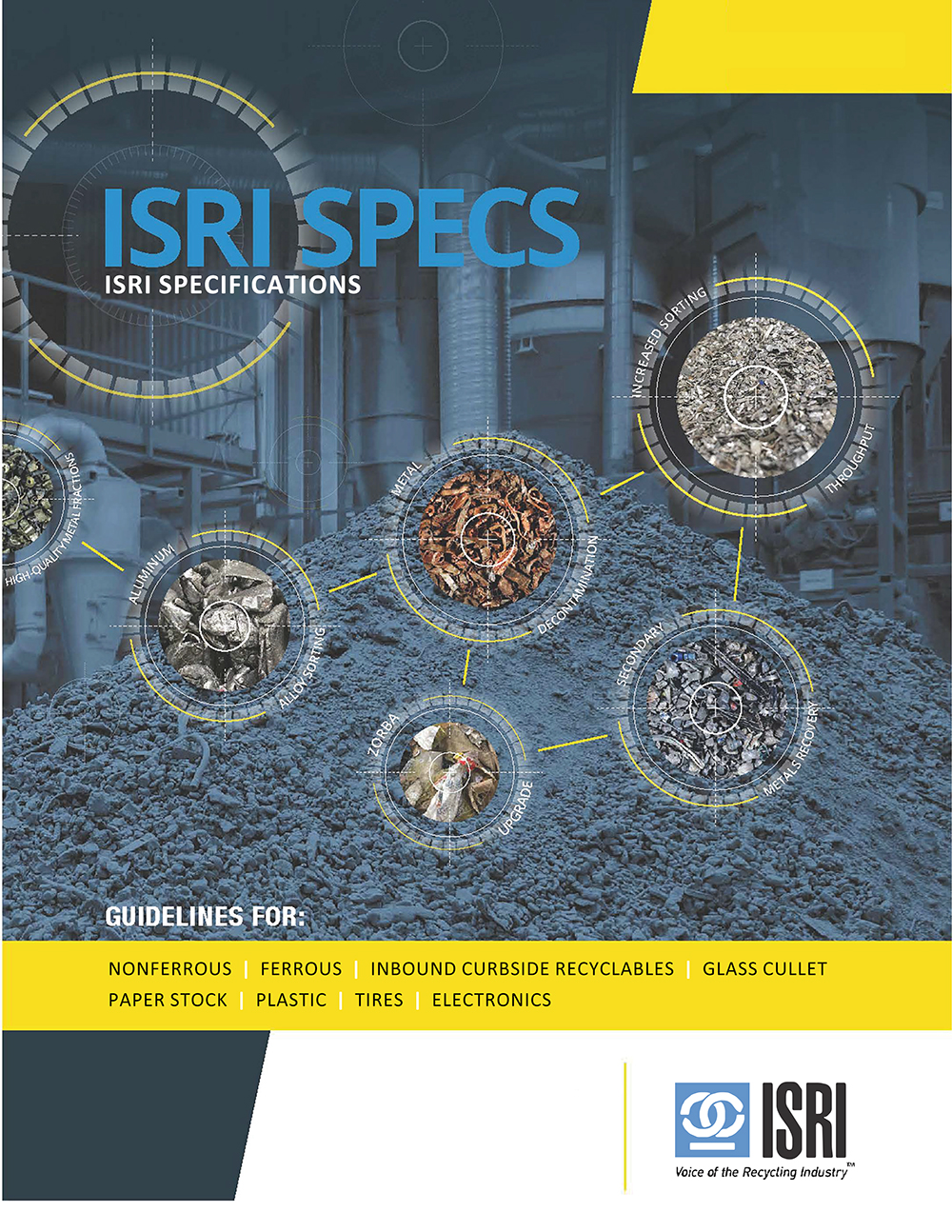Description: Any mixture of mixed color, clear/natural and printed Low-Density Polyethylene (LDPE) and Linear Low-Density Polyethylene (LLDPE) film with limited label contamination is acceptable. More than 20% by weight is expected to be color film. Films may be coded with ASTM D7611 resin identification code “#4, LDPE/LLDPE.”
Product: Color Polyethylene Film
Source: Sorted film generated after meeting its intended use from commercial establishments
Contamination: Total contamination should not exceed 5% by weight.
ALLOWABLE CONTAMINANTS AT LOW LEVELS: These contaminants are tolerable at low levels. The following contaminants should not exceed 2% by weight of any of the following “individual” contaminants, unless noted otherwise.
- HDPE (#2) film (5% allowable)
- Lightly labeled film (no more than 2 or 3 labels on each piece film)
- Plastic strapping and rubber bands
- Cardboard endcaps
- Moisture residues
CONTAMINANTS NOT ALLOWED: If present, these contaminants may result in rejection.
- Heavily labeled film
- Any non-PE films, metallized, or multi-material pouches
- PE film packaging exposed to hazardous materials, such as flammable, corrosive or reactive products, pesticides or herbicides
- Silicone coated film
- Film with oxo or bio-degradable additives, PVDC layers, or acrylic coatings
- Any rigid plastic bottle, container or packaging including PET (#1), HDPE (#2), PVC (#3), PP (#5), PS (#6), Other (#7) and compostable plastic (e.g. PLA and PHA)
- Any bulky rigid plastic
- Any non-PE plastic foam
- Food waste
- Free-flowing liquids
- Loose paper, cardboard (OCC)
- Textiles
- Metal, Wood, Glass
- Batteries
- Electronics scrap, including items with circuit boards or battery packs
- Bio-Medical waste/items (e.g. syringe, sharps, gloves, masks)
- Rocks, stones, mud, oils, grease
General: Refer to the General Information section for additional information.
Effective as of: May 12th, 2025
Terms & Conditions
Product These guidelines are designed with the potential for dealing with all recycled plastic in bale form. Initial specifications refer only to bottles. The code framework allows for generation of guidelines for all types of plastic packaging materials (including rigids and flexibles) with room for expansion to other plastic products and resins including those which are used to produce durable goods. Guidelines for those products may be added at a later date. Bale Density Bales shall be compressed to a minimum density of 10 pounds per cubic foot and a maximum density to be determined by individual contract between Buyer and Seller. Increased density may improve transportation efficiency, but over-compression may adversely affect the ability of a Buyer to separate, sort, and reprocess the material. Bale Tying Material Bale wires, ties, or straps shall be made of non-rusting or corroding material. Bale Integrity Bale integrity must be maintained through loading, shipping, handling, and storage. Distorted or broken bales are difficult to handle. They are unacceptable and may result in downgrading, rejection, or charge back. Allowable Contamination Unspecified materials must not exceed 2% of total bale weight. Bales which contain over 2% will be subjected to reduction in the contracted price of the material as well as charges for disposal of the contaminants. The reduced percentage will vary depending upon the amount and type of contamination. Quality of the baled plastic is the primary factor which determines the value. Prohibited Material Certain materials are understood to be specified as “prohibited.” Such materials will render the bale “non-specification” and may cause some customers to reject the entire shipment. These may include plastic materials which have a deleterious effect on each other when reprocessed, and materials such as agricultural chemicals, hazardous materials, flammable liquids and/or their containers, and medical waste. Liquids Plastic containers/materials should be empty and dry when baled. The bale should be free of any free-flowing liquid of any type. General Shipments should be essentially free of dirt, mud, stones, grease, glass, and paper. The plastic must not have been damaged by ultraviolet exposure. Every effort should be made to store the material above ground and under cover. A good faith effort on the part of the supplier will be made to include only rinsed bottles which have closures removed.
RELATED SPECS
Specialty PE Film Grades
Item Code: Specialty PE Film Grades
Some specialty grades are regularly traded and use the following names. This list is not comprehensi...
PE Film (Grade C)
Item Code: PE Film (Grade C)
Description: Any mix of clear/natural, color or printed polyethylene film, Low-Dens...
PE Clear Film (Grade B)
Item Code: PE Clear Film (Grade B)
Description: Any mix of polyethylene film, Low-Density Polyethylene (LDPE) or Linea...
PE Retail Mix Film
Item Code: PE Retail Mix Film
Description: Polyethylene stretch wrap, shrink wrap or other film generated by reta...
PE Furniture Mix Film
Item Code: PE Furniture Mix Film
Description: Any mixture of natural Low-Density Polyethylene (LDPE) film used for s...
